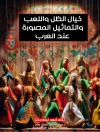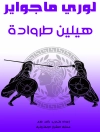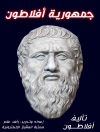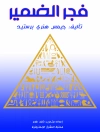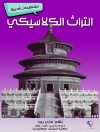This volume focuses on the development of field systems through time and space and in their wider landscape context, including classical issues pertaining to past land use and management regimes, including manuring, water, land and crop management, and technologies such as slash‐and‐burn cultivation, and use of the ard and plough. This book provides the first comprehensive attempt to bring together and provide a comprehensive insight into the latest prehistoric fieldscape research across Europe. The book raises a broader awareness of some of the main questions and scientific requests that are addressed by scholars working in various fieldscapes across Europe.
Themes addressed in this book include (a) mapping and understanding field system morphologies at various scales, (b) the extraction of information on social processes from field system morphologies, (c) the relations between field systems and cultural and natural features of their environment, (d) time-depths and temporalities of usage, and (e) specifics of the underlying agricultural systems, with special attention to matters of continuity and resilience and relation to changing practices. The case-studies explore how to best approach such landscapes with traditional and novel methodologies and targeted research in order to enhance our knowledge further. The volume offers inspiration and guidance for the heritage management of fieldscape heritage – not solely for future scholarly research but foremost to stimulate strategic guidance to frame and support improved protection of evidently vulnerable resources for Europe’s future. This volume is of interest to landscape archaeologists.
Spis treści
1 A gift of the land. The spread, function and social implications of Europe’s early land allotment; Mette Løvschal, Stijn Arnoldussen & Bob Johnston.- 2 Enclosing and Dividing Land: The Neolithic and Bronze Age Field Systems of Shetland; Claire Christie.- 3 Formation, use and chronology of Celtic fields: new perspectives from the Groningen Celtic field research programme; Stijn Arnoldussen.- 4 A large-area prehistoric cultural landscape in the Sachsenwald Forest near Hamburg;Volker Arnold.- 5 A sheep’s eye view. Land division, livestock and people in later prehistoric Somerset, UK; Clare Randall.- 6 Terraced crop fields in the Eastern Pyrenean mountains (France): the view from pedoarchaeology; Romana Harfouche & Pierre Poupet.- 7 Fields and farming-systems in Bronze Age Scotland; Stratford Halliday.- 8 Terraced Fields, Farming, and Farmers at the settlements of Kalamianos and Stiri, Greece; Lynne Kvapil.-9 The changing fieldscapes of Loughcrew: new insights from airborne lidar; Corinne Roughley, Elizabeth Shee Twohig, Colin Shell & Gillian Swanton.- 10 My home is my castle! Field systems and farms: rhythm and land appropriation during the Bronze Age in north-west France (2300-800 BCE);Cyril Marcigny & Rebecca Peake.- 11 Tracing the remains of a Late Bronze Age field systems in central mainland Greece; Michael Lane & Vassilis Aravantinos.- 12 Reconstructing enclosed and parcelled out landscapes from the first millennium BC in Himmerland, Denmark: arable fields, grazing land and settlement patterns examined in three micro-regions; Michael Vinter.- 13 Understanding the chronologies of England’s field systems; Robert Johnston, Rowan May and David Mc Omish.- 14 The prehistoric agrarian management pattern in the volcanic landscape of the Campanian Plain, southern Italy; Fabio Saccoccio.
O autorze
Stijn Arnoldussen is an Associate Professor in Later Prehistory at Groningen University. He is fascinated by the long-term development of (agri)cultural landscapes – particularly fieldsystems and the interplay of settlements, funerary sites and deposition between the Neolithic and the Roman Iron Age. He has recently excavated various later prehistoric field systems (known as Celtic fields or
raatakkers in Dutch) in the Netherlands.
Robert Johnston is a Senior Lecturer in Landscape Archaeology at the University of Sheffield. He recently published 'Bronze Age Worlds’ (2021), in which he considers the ways that kin relations were fundamental in forming the social life and landscapes of Bronze Age Britain and Ireland. He is currently researching landscape transformations in the upland and coastal landscapes of western Britain.
Mette Løvschal is an Associate Professor at Aarhus University’s Department of Archaeology and Heritage Studies and Moesgaard Museum. She is the Principal Investigator on the ERC project ‘Anthropogenic Heathlands: The Social Organization of Super-Resilient Past Human Ecosystems’ (ANTHEA) 2020–2025’. Her research engages with a range of archaeological, social anthropological and philosophical debates pertaining to spatial ontology and deep time trajectories, land tenure changes, disturbance ecologies, spatial perception, and the becoming of biosocial entanglements.


